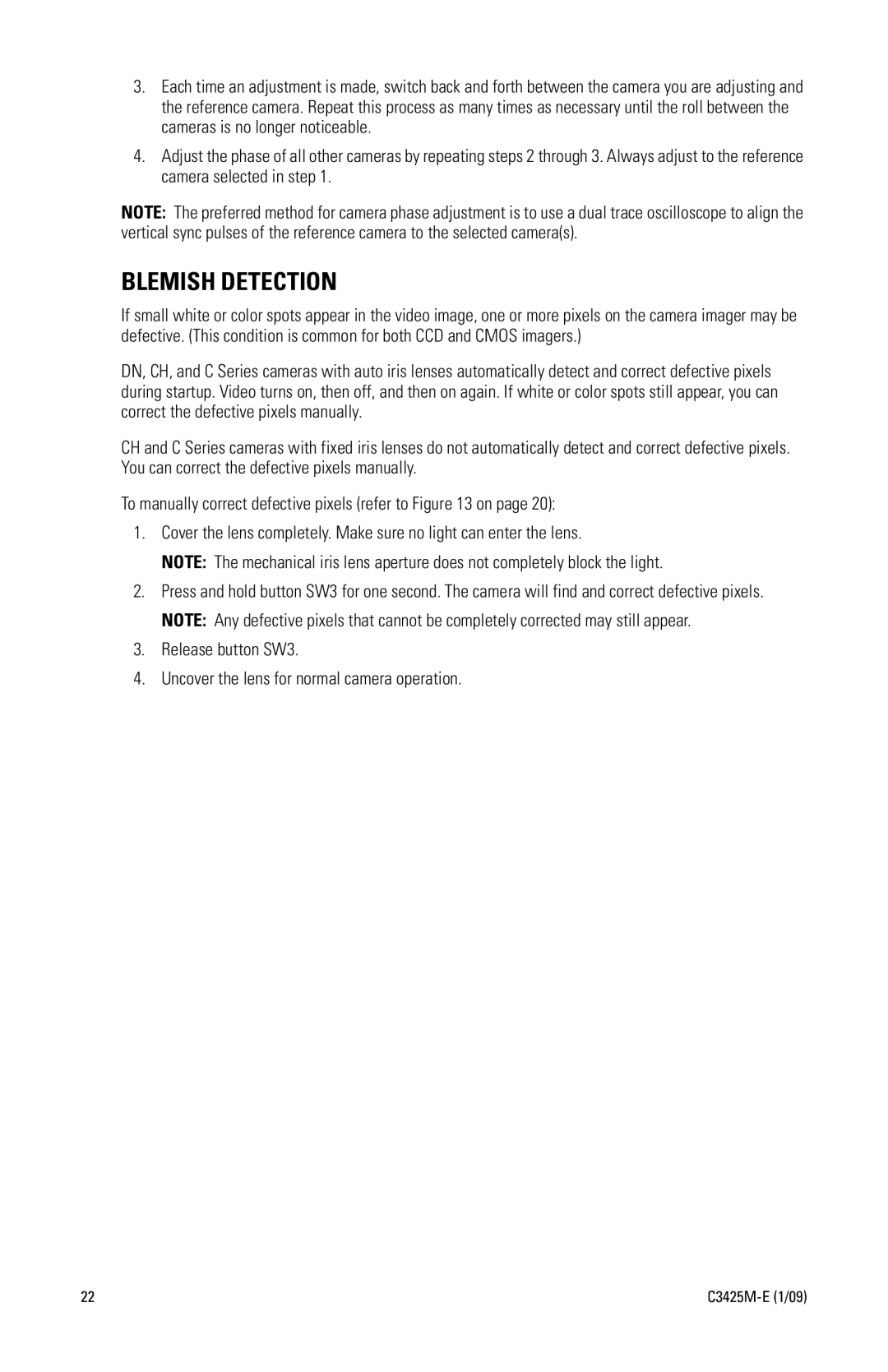3.Each time an adjustment is made, switch back and forth between the camera you are adjusting and the reference camera. Repeat this process as many times as necessary until the roll between the cameras is no longer noticeable.
4.Adjust the phase of all other cameras by repeating steps 2 through 3. Always adjust to the reference camera selected in step 1.
NOTE: The preferred method for camera phase adjustment is to use a dual trace oscilloscope to align the vertical sync pulses of the reference camera to the selected camera(s).
BLEMISH DETECTION
If small white or color spots appear in the video image, one or more pixels on the camera imager may be defective. (This condition is common for both CCD and CMOS imagers.)
DN, CH, and C Series cameras with auto iris lenses automatically detect and correct defective pixels during startup. Video turns on, then off, and then on again. If white or color spots still appear, you can correct the defective pixels manually.
CH and C Series cameras with fixed iris lenses do not automatically detect and correct defective pixels. You can correct the defective pixels manually.
To manually correct defective pixels (refer to Figure 13 on page 20):
1.Cover the lens completely. Make sure no light can enter the lens.
NOTE: The mechanical iris lens aperture does not completely block the light.
2.Press and hold button SW3 for one second. The camera will find and correct defective pixels. NOTE: Any defective pixels that cannot be completely corrected may still appear.
3.Release button SW3.
4.Uncover the lens for normal camera operation.
22 |
